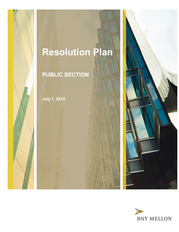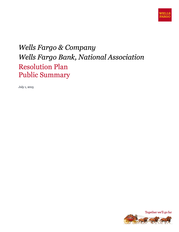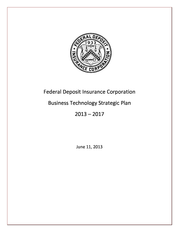Description
H. Description of Material Management Information Systems
BNY Mellon utilizes MIS for risk management, accounting, financial, and regulatory reporting, as
well as internal management reporting and analysis. These systems are primarily platform and
mainframe technologies with interface applications that are used to collect, maintain, and report
information to management and externally for regulatory compliance. The MIS are also used by
BNY Mellon and its core business lines and critical operations to perform the functions
necessary to run these businesses and operations.
BNY Mellon’s MIS generate and distribute reports that are utilized by senior management to monitor the financial health, risks, and operation of BNY Mellon and its core business lines and critical operations. As discussed in Section III, we have devoted significant resources to upgrading our technology and MIS to ensure that reliable information is available on a timely basis at the appropriate level of granularity, including efforts to provide common data repositories and new or upgraded systems for automated reporting, tracking and monitoring of key metrics across a number of business lines. Systems and applications at BNY Mellon are essential to smooth and effective operations and are managed through a best practices Business Continuity approach. The program is built on the guiding principles of geographic diversification, separation of technology from operations, redundant and resilient telecommunications and an extensive testing program.
Recovery planning is considered an integral part of BNY Mellon’s approach to risk management and BNY Mellon has established formal policies, procedures, and programs for analyzing, developing, maintaining, and testing recovery plans for all of its lines of business. The majority of the MIS software used by BNY Mellon has been developed internally and is supplemented with third party vendor developed applications. Governance, control and maintenance of critical applications are critical components of the BNY Mellon technology process, which emphasizes minimal recovery times in the event of material financial distress or disruption. Section IV.H: Other Background Information / Description of Material Management Information Systems 68 .
BNY Mellon’s MIS generate and distribute reports that are utilized by senior management to monitor the financial health, risks, and operation of BNY Mellon and its core business lines and critical operations. As discussed in Section III, we have devoted significant resources to upgrading our technology and MIS to ensure that reliable information is available on a timely basis at the appropriate level of granularity, including efforts to provide common data repositories and new or upgraded systems for automated reporting, tracking and monitoring of key metrics across a number of business lines. Systems and applications at BNY Mellon are essential to smooth and effective operations and are managed through a best practices Business Continuity approach. The program is built on the guiding principles of geographic diversification, separation of technology from operations, redundant and resilient telecommunications and an extensive testing program.
Recovery planning is considered an integral part of BNY Mellon’s approach to risk management and BNY Mellon has established formal policies, procedures, and programs for analyzing, developing, maintaining, and testing recovery plans for all of its lines of business. The majority of the MIS software used by BNY Mellon has been developed internally and is supplemented with third party vendor developed applications. Governance, control and maintenance of critical applications are critical components of the BNY Mellon technology process, which emphasizes minimal recovery times in the event of material financial distress or disruption. Section IV.H: Other Background Information / Description of Material Management Information Systems 68 .













